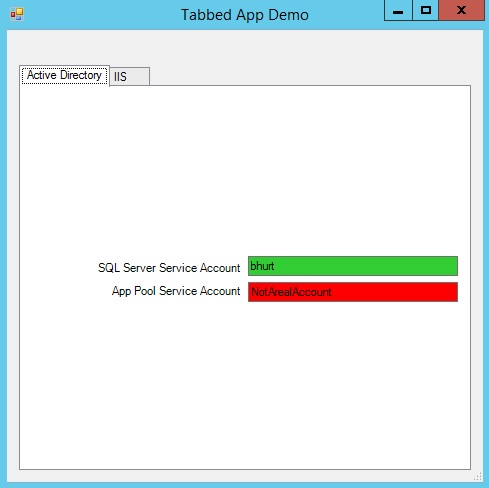

- Sapien powershell studio disable tab .exe#
- Sapien powershell studio disable tab install#
- Sapien powershell studio disable tab verification#
- Sapien powershell studio disable tab code#
Working with Tabs and Panes (Docking / Layout) Access your current license information.There are also four buttons on the right hand side of the ribbon bar. The Help tab contains links to product registration, product updates, SAPIEN tools, and more. The Tools tab contains links to external programs, syntax checking, script signing, compare files and more. The deploy tab contains tools to create packaged executables, MSI installers and deployment procedures. The designer tab contains functions related to forms manipulation and creation. The home tab contains the functions used most often while scripting and is the default tab in PowerShell Studio. The file tab contains functions related to opening and closing files and projects, and printing. PowerShell Studio displays a ribbon bar at the top of the application window:
Sapien powershell studio disable tab code#
Parent feature needs to be enabled first." -ForegroundColor RedĢ01: Write-Host "Failed with error code "$ErrCode -ForegroundColor RedĢ21: $RelativePath = (split-path $SCRIPT:MyInvocation.M圜ommand.Chapter 3-Basic Orientation Basic Orientation The Ribbon
Sapien powershell studio disable tab .exe#
Powershell.exe -executionpolicy bypass -command WindowsFeatures.ps1 -FeaturesFile 'FeaturesList.txt'Ĥ9: $Setting,ħ1: Additional information about the function.ħ4: )]ħ7: $FeatureName,ħ8: $FeatureStateĨ1: $WindowsFeatures = Get-WindowsFeaturesListĨ2: $WindowsFeature = $WindowsFeatures | Where-Object ġ26: $FeatureName = $FeatureName.Split(':')ġ27: $FeatureName = $FeatureName.Trim()ġ30: $FeatureState = $FeatureState.Split(':')ġ31: $FeatureState = $FeatureState.Trim()ġ33: $Feature | Add-Member noteproperty Name $FeatureNameġ34: $Feature | Add-Member noteproperty State $FeatureStateġ38: $Features = $Features | Sort-Object Nameġ63: $Name,ġ64: $Stateġ67: $EXE = $env:windir + "\system32\dism.exe"ġ70: $Parameters = "/online /enable-feature /norestart /featurename:" + $Nameġ72: $Parameters = "/online /disable-feature /norestart /featurename:" + $Nameġ74: $ErrCode = (Start-Process -FilePath $EXE -ArgumentList $Parameters -Wait -PassThru -WindowStyle Minimized).ExitCodeġ76: $FeatureChange = Confirm-Feature -FeatureName $Name -FeatureState $Stateġ79: Write-Host "Enabled" -ForegroundColor Yellowġ81: Write-Host "Disabled" -ForegroundColor Yellowġ84: Write-Host "Failed" -ForegroundColor Redġ87: $FeatureChange = Confirm-Feature -FeatureName $Name -FeatureState $Stateġ90: Write-Host "Enabled & Pending Reboot" -ForegroundColor Yellowġ92: Write-Host "Disabled & Pending Reboot" -ForegroundColor Yellowġ95: Write-Host "Failed" -ForegroundColor Redġ99: Write-Host "Failed. The format for the file is: RSATClient,enable for example. You can name the text file any name you want.

I have also included the option to run a report of all available features and their state. It then outputs the feature name and status to the display. This script allows you to set windows features while also verifying each feature was set correctly by querying the feature for the status. With the help of Sapien's PowerShell Studio, this script was a breeze to write.

Sapien powershell studio disable tab verification#
I know there is the Install-WindowsFeatures cmdlet, but I also wanted to incorporate verification and other features into a single script. Before, I used a batch script that executed DISM to set each feature.
Sapien powershell studio disable tab install#
One of the first things I needed to do was to install and set the Windows 10 features.

I am in the beginning stages of creating a Windows 10 build.


 0 kommentar(er)
0 kommentar(er)
